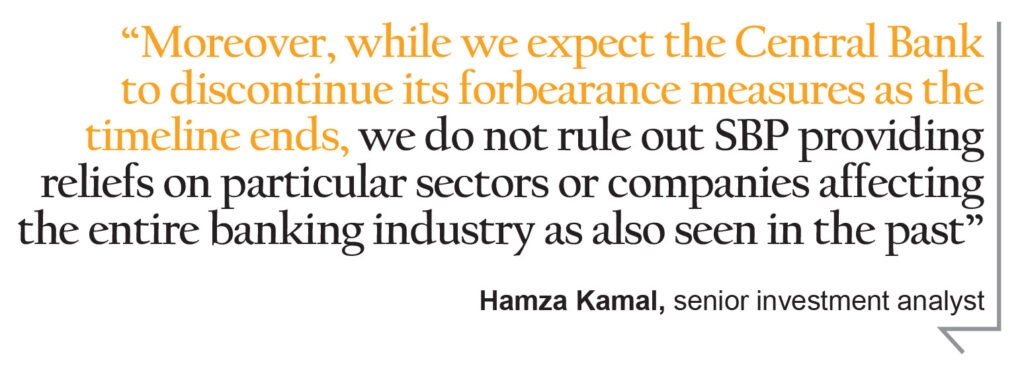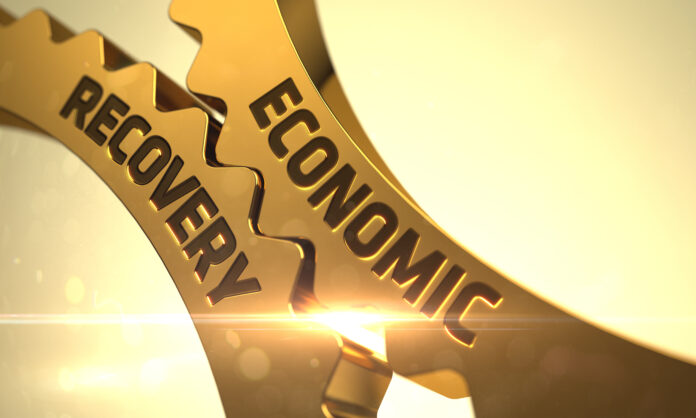When the Covid-19 pandemic hit Pakistan, there were worries that the banking sector would not recover. But timely intervention by the State Bank of Pakistan, and banks’ over-compensation somehow saved the sector. And this is not just anecdotal or conjecture, because this February and March, when every bank started releasing their annual reports to the State Bank of Pakistan, the figures were, surprisingly, in line with expectations. The fear was that banks would do far worse than expected even given the circumstances. Instead, in some cases, it could almost be said that Covid-19 had next to no effect at all.
In a note issued to clients on March 9, senior investment analyst Hamza Kamal, made the observation that the banking sector delivered a much better than expected performance on loan quality in a ‘tumultuous’ calendar year 2020. “The total non-performing loans of our private banking universe (representing 55.4% of total industry advances, excluding Habib Metropolitan Bank) surged by 6.8%, inline with yearly historical averages, attributable to timely response by SBP,” he said.

According to Kamal, the asset quality demonstrated exceptional resilience in the calendar year 2020. The help from the State Bank also had other benefits. It provided banks which have international operations much needed space to absorb delinquencies on the international loan book, which jumped 3.8% in the first nine months of calendar year 2020 in US dollar terms. However, the sharp downtick in these non performing loans in US dollar terms in the final quarter (where they fell by 2.6% on a quarterly basis) can be taken as an indication of a near term trend in non performing loans from overseas.
So what about domestic loans? The news is still bright, and as Kamal explains in his note, the loan book reflected exceptional resilience in most part of the year with total non-performing loans increasing 3.3% in the nine month period of calendar year 2020; while the final quarter witnessed an uptick of 4.4%. “We still remain comfortable on domestic asset quality as the relief period expires awaiting more data points suggesting an alternative view,” he said.
This view was also reportedly shared by the managements of their universe banks: that after aggressively building up loss reserves in the second and third quarter (around Rs18.4 billion, or 0.5% of gross advances), banks either opted to reduce pace of accumulation or partly reverse provisions eyeing improved economic performance.
Furthermore, Kamal said the normalization in credit costs is expected, with recoveries to counter fresh non-performing buildup. The overall cost of provisioning stood at 1.6% in calendar year 2020, which is the highest since 2013. Kamal expects costs to normalize going forward even after the expiration of the relief period.
“Our assumption is based upon heightened economic activity particularly in real estate translating into improved recovery prospects for the banking universe as indicated by recovery ratio in the fourth quarter in 2020, standing at 2.2%, which is the highest quarterly average since December 2017,” he said. “Improving the business outlook distinctly in the textile space is likely to make debt swap arrangements feasible. This was seen in Habib Metropolitan Bank, where non-banking assets jumped Rs2.6 billion in September 2020 versus Rs414 million in June 2020.”
Because of this, potential reversals in credit charge could assist in countering any fresh NPL accumulation in our view. says Kamal. “Moreover, while we expect the Central Bank to discontinue its forbearance measures as the timeline ends, we do not rule out SBP providing reliefs on particular sectors or companies affecting the entire banking industry as also seen in the past,” the analyst added.
Kamal expects MCB Bank to speed up recoveries from NIB’s non-performing loans portfolio, as 50% of the targeted amount is yet to be recovered. UBL, according to Kamal, has gotten over the hump of its overseas loan portfolio. Additionally, the MCB and Bank Alfalah lead the pack in terms of loss reserves buildup relative to its loan book.
The banking sector to return to limelight as expectation of an eventual rate hike comes into play: The banking sector has underperformed the market by 4.1% despite heavy dividend payout as below expected earnings and payouts in select bank stocks deteriorated investor sentiments. “Going forward, a bull-cycle in commodities spurring concerns on inflation and external account and increasing market expectation of an eventual rate hike by the Central Bank could bring the sector into limelight.”

























